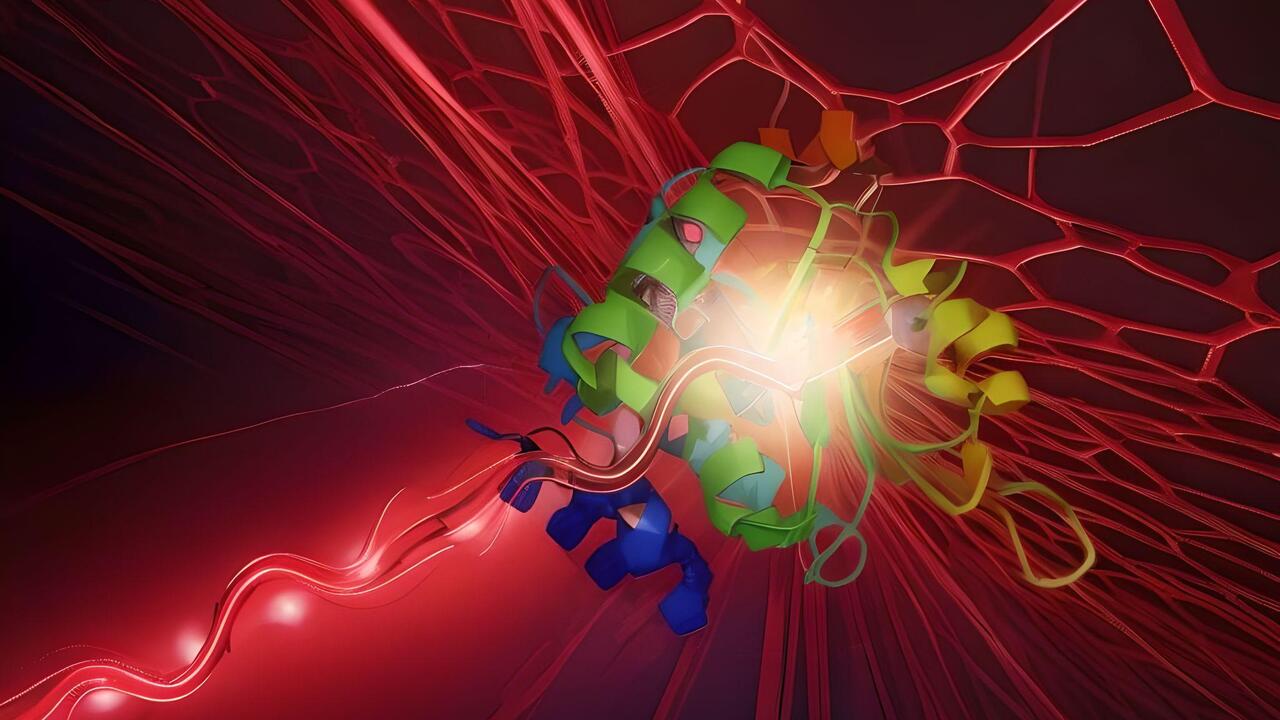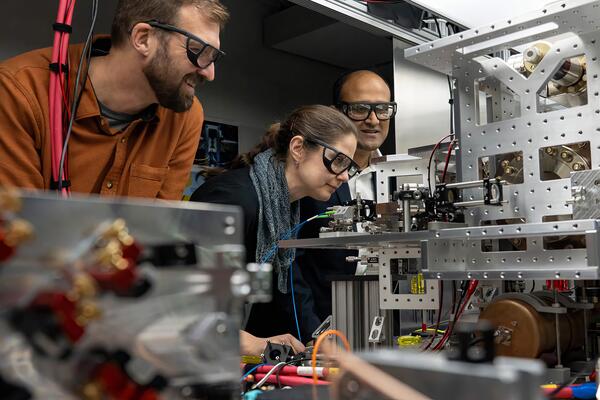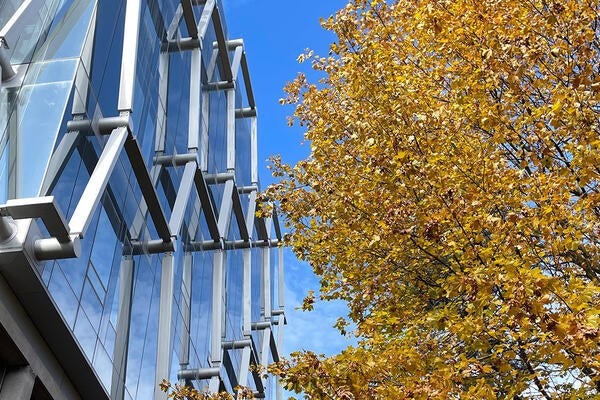
Free Electron Laser facility at Waterloo gets $10M funding boost
The state-of-the-art facility will be the only user facility of its kind in North America

The state-of-the-art facility will be the only user facility of its kind in North America
By Katie McQuaid Faculty of ScienceToday the Government of Canada announced that the University of Waterloo Canadian Free Electron Laser project will be getting $10 million in funding from the Canadian Foundation for Innovation (CFI) to put towards the $50+ million facility to be built on the Waterloo Campus.
Free Electron Lasers (FELs) are a next stage of light source development offering laser-like properties that complement Canada’s existing synchrotron infrastructure at Canadian Light Source and enabling science that is currently not possible anywhere else in Canada. Their three defining characteristics – short pulse length, high brightness, and spatial coherence – enable FELs to address key scientific challenges in a way that no other type of infrastructure can match.
 Scott Hopkins, Associate Professor, Chemistry
Scott Hopkins, Associate Professor, Chemistry
Originally conceived by Scott Hopkins, Chemistry Professor, this state-of-the-art facility will be the only user facility of its kind in North America and one of a handful of facilities in the world with an infrared FEL (IR-FEL). This facility will be the centrepiece of a national network for photonic science. “Having a FEL based in Waterloo will open the doors to further innovation for Canadian researchers,” says Hopkins. “We'll work with research hospitals to cure diseases and water treatment facilities to develop new technologies that eliminate contaminants. The research we conduct might even help with finding life on other planets.”
The IR-FEL facility will enable fundamental science concerned with monitoring energy flow through molecules and materials, with applications in light harvesting and photo-control of molecular properties. New research in chemical, spatial, and temporal mapping of living biological materials will also become possible. The FEL will be an important tool for nanotechnology researchers who are interested in probing nanostructured materials and developing, for example, new sensors, as well as investigators who are interested in exploring the effects of radiation on molecules, materials, and biological systems.
“Having the FEL on the UWaterloo campus will position Ontario as an international leader in photonic science and will attract top research talent from around the world to study and work in Ontario,” says Hopkins. “This facility will encourage research collaborations between Canadian and international scientists who will work together to use the FEL for exciting, world-changing research.” Getting time on the FEL will be through an application process that will start with Canadian researchers and their collaborators.
The University of Waterloo is excited to house Canada’s only FEL facility on our campus. As it navigates a quick five-year construction timeline from shovel-in ground to opening its doors to international researchers, the University acknowledges that external investments and partnerships will be required to reach its ambitious goal. The Faculty of Science looks forward to engaging alumni, donors, university stakeholders, and the greater community in important conversations that will progress us toward opening a facility that will be a game-changer for Canadian researchers.

Read more
And a new model for how quantum research is shared — opening doors for the next generation of scientists and entrepreneurs

Read more
New medical device removes the guesswork from concussion screening in contact sports using only saliva

Read more
15 University of Waterloo researchers have been named to the annual Highly Cited Researchers™ list for significant contributions to their specific fields of research
The University of Waterloo acknowledges that much of our work takes place on the traditional territory of the Neutral, Anishinaabeg, and Haudenosaunee peoples. Our main campus is situated on the Haldimand Tract, the land granted to the Six Nations that includes six miles on each side of the Grand River. Our active work toward reconciliation takes place across our campuses through research, learning, teaching, and community building, and is co-ordinated within the Office of Indigenous Relations.